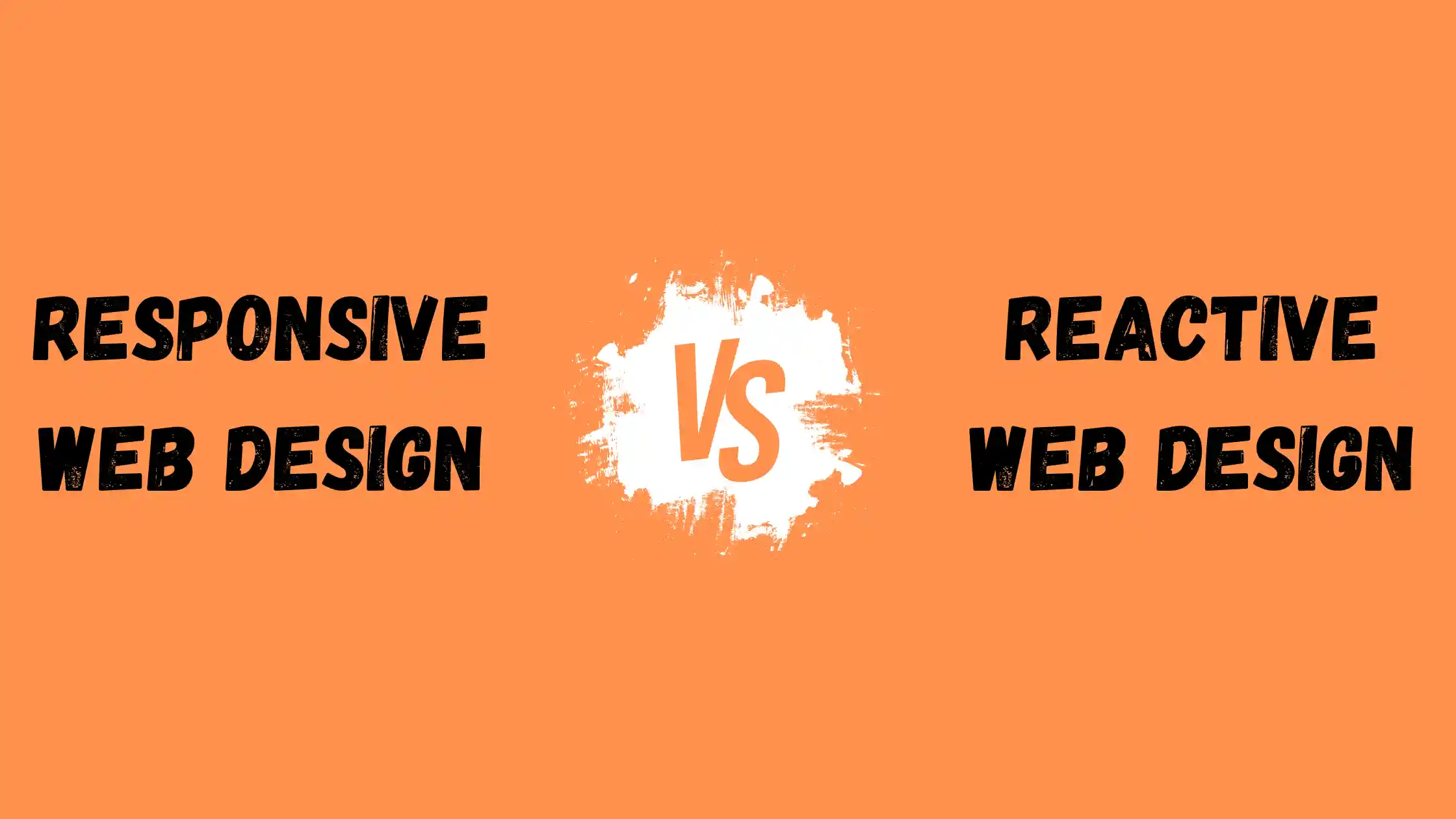Overview of Reactive Web Design
In the field of web development, reactive web design is a revolutionary method that places a strong emphasis on flexibility and instantaneous response to user input. The concept, tenets, and advantages of reactive web design are thoroughly covered in this essay, which also offers a thorough how-to for comprehending and applying this cutting-edge web design method.
Table of Contents
The Development of Website Design
From the static pages of the early internet to the dynamic and interactive experiences we see today, web design has advanced dramatically. With simplistic HTML layouts, web design was initially simple. With the development of the internet came responsive web design, which met the demand for websites to work on various devices. Adaptive Web Design, however, goes one step further by emphasizing instantaneous answers to user input, providing a more tailored and captivating user experience.

Reactive web design: what is it?
“Responsive web design” describes building web pages that instantly adapt to and react to user input. Reactive design considers a range of user inputs and behaviors, including clicks, scrolls, and mouse movements, in contrast to standard responsive design, which primarily adjusts to varying screen sizes. This allows reactive design to deliver a prompt and customized response.
Essential Ideas for Reactive Web Design
Real-time responsiveness and a user-centric approach are central to Adaptive Web Design. By guaranteeing that web elements respond instantly to human interactions, this design philosophy puts the user experience first and produces a fluid and user-friendly interface. This entails anticipating user demands and promptly providing pertinent feedback using sophisticated scripting and programming approaches.

The Advantages of Adaptive Web Design
Numerous advantages come with Adaptive Web Design, such as better website performance and an improved user experience. It lowers bounce rates and keeps users interested by reacting quickly to their activities. Furthermore, because elements in the reactive design are only loaded or updated as necessary, it might result in shorter load times and better resource management.

Essential Tools for Reactive Web Design
Advanced web technologies must be combined to implement Adaptive Web Design. The foundation comprises HTML5 and CSS3, which enable dynamic and adaptable layouts. JavaScript frameworks for managing states and sophisticated interactions, such as React, Angular, and Vue.js, are essential. Together, these technologies produce a dynamic, responsive web environment.

Comparing Responsive and Reactive Web Design
Although they use different approaches, responsive and Adaptive Web Design strive to enhance the user experience. To ensure device usability, responsive design focuses on changing the layout depending on screen size and orientation. Reactive design, on the other hand, emphasizes being responsive in real-time to user input, providing a more dynamic and captivating experience. Every strategy has applications, and frequently, the greatest outcomes come from combining the two.

Putting Reactive Web Design into Practice
To put reactive web design into practice, take the following steps:
- Recognize User Behavior: Examine user interactions and behaviors to pinpoint important areas for real-time responsiveness.
- Select the Appropriate Instruments: Choose frameworks and technologies that complement reactive design concepts.
- Create Interactive Components: Build web components that dynamically react to user input.
- Conduct a Comprehensive Examination: To ensure everything functions as it should and that the user experience is seamless, thoroughly test the product.
- Optimize for performance: The website should be continuously monitored and optimized for performance to ensure prompt responses.
Frameworks & Tools for Reactive Web Design
Several frameworks and tools are necessary for adaptive Web Design. Popular options consist of:
- React is a potent JavaScript package for creating dynamic user interfaces.
- Angular is a powerful framework for creating dynamic websites.
- Vue.js is a framework for reactive web components that is adaptable and simple to integrate.
- Making a comparison between these tools will help you choose the one that best meets the needs of your project.

Case Studies: Reactive Web Design Success Stories
Analyzing case studies of effective implementations might yield insightful information about how effective reactive web design is. Reactive design has been used by businesses like Airbnb and Netflix to increase customer engagement and pleasure, showcasing the practical advantages and promise of this strategy.
Ready to elevate your UX design skills? Don’t miss out on our in-depth guide, “Master the Intricacies of UX Design Layers: An Ultimate Guide 2024.” Discover the secrets to creating exceptional user experiences and stay ahead in the digital world. Read the full guide now!
Difficulties with Reactive Web Design
Adaptive Web Design is not without problems, despite its benefits. Keeping performance under high load, guaranteeing cross-browser compatibility, and handling complicated state changes are typical problems. Efficient state management libraries, thorough testing, and performance optimization strategies are some of the solutions.

Upcoming Developments in Reactive Web Design
With new technologies set to expand its potential, the future of Adaptive Web Design is bright. Reactive design is anticipated to be integrated with emerging technologies like artificial intelligence, machine learning, and augmented reality to create even more immersive and individualized user experiences.
Ready to build your dream website? Discover the power and simplicity of Yoxl’s website builder! Create stunning, professional websites with ease. Start now at Web Website Builder and bring your vision to life!
How SEO Is Improved by Reactive Web Design
The use of responsive web design can greatly improve SEO results. Enhancing user interaction and decreasing bounce rates help search engines value the website more and may give it a higher rating. The content is dynamically optimized for various user circumstances thanks to reactive design, improving SEO performance.

Assessing Reactive Web Design’s Performance
Keep an eye on important metrics like load times, conversion rates, and user engagement to gauge the effectiveness of reactive web design. User feedback surveys and tools like Google Analytics can offer insightful information about how effectively your reactive design works and where it can be improved.
Join the green revolution in digital design! Explore “The Ultimate Guide to Sustainable Web Design Trends in Digital Design” and learn how to create eco-friendly, high-performance websites. Read the guide now and make a positive impact!
E-commerce Website Design with Reactivity
Adaptive Web Design is very useful for e-commerce websites. Giving immediate feedback on tasks like adding products to the cart, using filters, and checking out improves the shopping experience. Increased sales and improved customer satisfaction may result from this real-time reaction.

Mobile-Friendly Web Design that Reacts
Many mobile internet users necessitate optimizing Adaptive Web Design for mobile devices. Among the methods are ensuring touch-friendly interactions, adjusting material to fit smaller screens, and optimizing load times for slower connections. For reactive design to be effective, it is essential to comprehend mobile user behavior.
Accessibility in Web Design That Is Reactive
All users, including those with disabilities, can interact with your website efficiently by including accessibility in Adaptive Web Design. This entails applying inclusive design principles, including compatibility with screen readers, keyboard navigability, and alternative language for interactive features and graphics.
Ready to build your dream website? Discover the power and simplicity of Yoxl’s website builder! Create stunning, professional websites with ease. Start now at Web Website Builder and bring your vision to life!

Reactive Web Design’s Security Aspects
One important component of Adaptive Web Design is security. Cross-site scripting (XSS) and cross-site request forgery (CSRF) are two common dangers. To preserve trust and safeguard user data, it is imperative to put strong security measures in place, such as input validation, secure coding techniques, and frequent security audits.
Typical Errors in Reactive Web Design
Success in Adaptive Web Design depends on avoiding frequent blunders. Avoid making mistakes like overburdening users with interactive elements, skipping performance optimization, and disregarding accessibility guidelines. Making improvements to these errors can lead to a website that is more efficient and easy to use.
Ready to build your dream website? Discover the power and simplicity of Yoxl’s website builder! Create stunning, professional websites with ease. Start now at Web Website Builder and bring your vision to life!

FAQs
What distinguishes responsive web design from reactive web design?
While responsive design adjusts to various screen sizes, reactive design concentrates on real-time user interaction responses.
Why is it crucial to use reactive web design?
It makes the experience more engaging and gives instant feedback, which increases customer pleasure and engagement.
Which technologies are required to create a reactive website design?
HTML5, CSS3, and JavaScript frameworks like Vue.js, Angular, and React are important technologies.
What effect does SEO have on reactive web design?
Better SEO performance results from increased user engagement and decreased bounce rates.
What difficulties does putting reactive web design into practice present?
The challenges include keeping performance under high load, guaranteeing cross-browser compatibility, and handling state changes.
Can e-commerce websites profit from reactive web design?
Certainly, giving users immediate feedback on their activities improves the shopping experience and increases customer happiness and sales.
Conclusion
How we create and use websites has advanced significantly with the advent of reactive web design. It provides many advantages by emphasizing user-centric design and real-time responsiveness, from better SEO performance to an improved user experience. Using the concepts and tools of Adaptive Web Design can make websites more successful, dynamic, and engaging.
Your work has captivated me just as much as it has you. The sketch you’ve created is tasteful, and the material you’ve written is impressive. However, you seem anxious about the prospect of presenting something that could be considered questionable. I believe you’ll be able to rectify this situation in a timely manner.